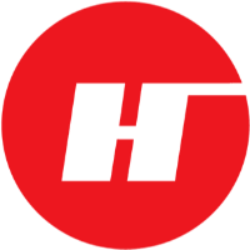Overall, Halliburton demonstrates a strong business model with significant competitive advantages, especially in international markets, supported by a solid financial performance. However, challenges in the North American market and uncertainty in Mexico present potential risks. The company is well-positioned for future growth through innovative technology and strategic alliances.
Analysis Date: January 22, 2025
Last Updated: March 12, 2025
Trailing Twelve Months (TTM) values provide a view of the company's performance over the last year.
Graham Value Metrics
Benjamin Graham's value investing approach focuses on finding stocks with a significant margin of safety between their intrinsic value and market price.
Intrinsic Value
Estimated fair value based on Graham's formula
$110.04
Current Market Price: $19.68
IV/P Ratio: 5.59x (>1.0 indicates undervalued)
Margin of Safety
Gap between intrinsic value and market price
82.0%
Graham recommended a minimum of 20-30% margin of safety
Higher values indicate a greater potential discount to fair value
ROE: 24.713438735177863
ROA: 2.4035643100011725
Gross Profit Margin: 18.745641562064154
Net Profit Margin: 10.900453277545328
Trailing Twelve Months (TTM) values provide a view of the company's performance over the last year.
High Return on Equity
HAL has a return on equity of 24.71%, indicating that the company is effective in generating profits from its equity base.
Strong Operating Profit Margin
16.66
Operating Profit Margin
An operating profit margin of 16.66% shows that HAL maintains a solid profit after covering operating expenses, which is a positive indicator of operational efficiency.
Net Profit Margin
A net profit margin of 10.90% is decent but could be improved, suggesting that there are challenges in converting revenue into actual profit.
About Profitability Metrics
Profitability metrics measure a company's ability to generate earnings relative to its revenue, operating costs, and other relevant metrics. Higher values generally indicate better performance.
Return on Equity (ROE)
Measures how efficiently a company uses its equity to generate profits
24.71%
10%
15%
Higher values indicate better returns for shareholders
TTM (as of 2025-04-16)
Return on Assets (ROA)
Measures how efficiently a company uses its assets to generate profits
2.40%
3%
7%
Higher values indicate better asset utilization
TTM (as of 2025-04-16)
Gross Profit Margin
Percentage of revenue retained after accounting for cost of goods sold
18.75%
20%
40%
Higher values indicate better efficiency in production
TTM (as of 2025-04-16)
Net Profit Margin
Percentage of revenue retained after accounting for all expenses
10.90%
8%
15%
Higher values indicate better overall profitability
TTM (as of 2025-04-16)
Strong Current Ratio
With a current ratio of 2.05, HAL demonstrates strong liquidity and the ability to cover short-term obligations comfortably.
Healthy Interest Coverage Ratio
8.49
Interest Coverage Ratio
An interest coverage ratio of 8.49 indicates that HAL can easily meet its interest payments, reflecting strong financial stability.
Moderate Debt Levels
0.82
Debt-to-Equity Ratio
A debt-to-equity ratio of 0.82 suggests that HAL has a moderate amount of leverage, which could pose risks if not managed carefully.
About Financial Health Metrics
Financial health metrics assess a company's ability to meet its financial obligations and its overall financial stability.
Debt to Equity Ratio
Total debt divided by total equity
0.81x
1.0x
2.0x
Lower values indicate less financial leverage and risk
Less than 1.0 is conservative, 1.0-2.0 is moderate, >2.0 indicates high risk
Q4 2024
Current Ratio
Current assets divided by current liabilities
2.05x
1.0x
2.0x
Higher values indicate better short-term liquidity
Less than 1.0 is concerning, 1.0-2.0 is adequate, greater than 2.0 is good
Q4 2024


